#film noir monsters
Text

I put together a label for my Film Noir blind bags :)) the pins just shipped to me and I hope to have them ready for the October Etsy shop update.
5K notes
·
View notes
Photo
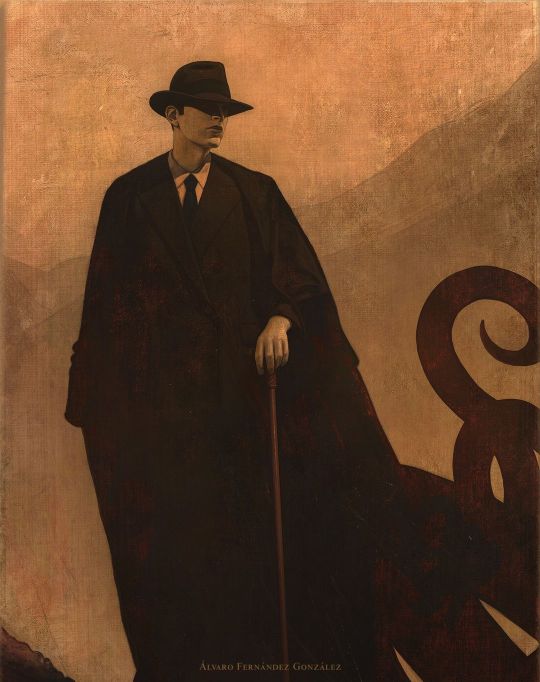
NYARLATHOTEP
by Álvaro Fernández González
#tentacles#fhtagn#alvaro fernandez gonzalez#nyarlathotep#cthulhu#lovecraft#creature#monster#horror#great old ones#painting#film noir#shapeshifter#concept art#chara design#fhtagnnn
781 notes
·
View notes
Photo

Phantom [ArtFight]
First attack down! I love me a glowy blue skull-faced sad boy. it's kind of a thing at this point
Character (c) ivyking2140
Art (c) VicekillX
Done in Rebelle 6
#artfight#2023#art fight#team vampires#teamvampires#skull#monster#ghost#phantom#detective#gumshoe#film noir#floyd delancey#ivyking214#ivyking2140#vicekillx#giftart#trades
44 notes
·
View notes
Text
i love that there are so many callbacks to the earlier generations of mh in the third gen! it’s so fun to watch all of them 🥹🥰🫶✨
13 notes
·
View notes
Text
On April 30, 2016, God Told Me To and It Lives Again were screened as a double-feature on TCM Underground.


Here's some new art inspired by both Larry Cohen classics!
#tcm underground#god told me to#it lives again#larry cohen#tony lo bianco#horror#horror movies#horror film#horror art#grindhouse#exploitation film#double feature#neo noir#monster movies#movie art#art#drawing#movie history#pop art#modern art#pop surrealism#cult movies#portrait#cult film
3 notes
·
View notes
Text
decided to finally post this here since tiktok silenced her
an ode to the greatest piece to media ever created 🤌💋
#monster high#boo york boo york#catty noir#monster high movie#mh#monster high boo york boo york you are my everthing#Depression bonded with this film
4 notes
·
View notes
Text
A noir music collection of big band for trouble, dark jazz for misery, sultry blues for poor dating choices and a smattering of badass.
This is the same playlist I listen to while working on the Hateship game, so it'll be updated live with new tunes as I fill it out.
#music playlist#spotify playlist#blues#big band#jazz#terato#monster romance#monster boyfriend#monster boy#noir#film noir#Spotify#hateship game
8 notes
·
View notes
Text
Cat People (1942)
Apparently the director, Jacques Tourneur, did not want this film to have a visible monster at all, but the higher-ups (studio or producers) insisted on having a cat onscreen in the office-room attack scene, and would’ve preferred a lot more of the same. In this case I don’t think the movie is harmed by that profit-conscious interference. For me Cat People has exactly the right balance: plenty of suspense, lots left to the imagination, a focus on the psychological effects of thinking you might be a killer whether you really are or not, and a higher standard of storytelling than repeatedly having people scream while a costume-creature attacks them; and it does all this without sitting on the fence of “Is she or isn’t she, make your own interpretation!” To me there is just the right amount of monster, taking a position but showing enormous restraint.
(That can’t be said of the 1982 remake, but let’s not talk about that one.)
0 notes
Text
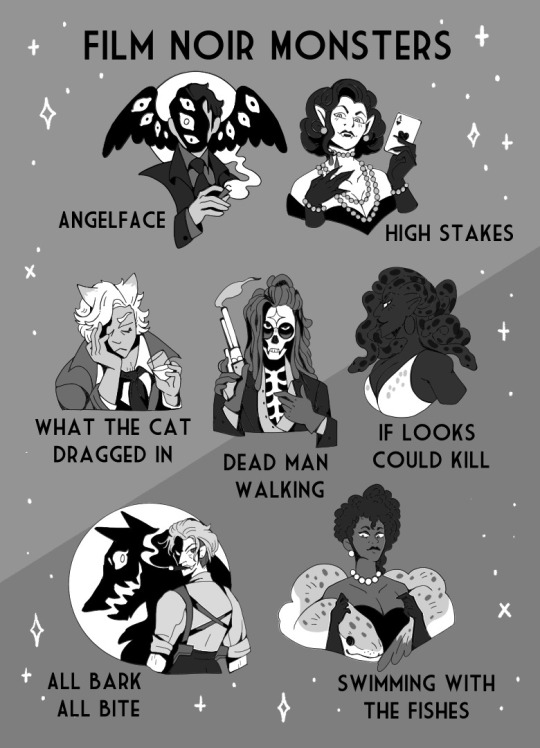

I'm placing an order with my manufacturer soon and the top two designs of this series will be reordered!
448 notes
·
View notes
Photo

Screenshot from Nightmare Alley directed by Guillermo del Toro. Starring Bradley Cooper, Rooney Mara, Cate Blanchett and many more. A dark atmospheric thriller with a great cast.
0 notes
Note
Do you have any games that involve urban fantasy with less focus on fighting than something like Dresden or Shadowrun?
THEME: Urban Fantasy (Minimal Fighting)
Hello there! What I've got here is quite a mix, I wasn't sure how much violence you wanted (or didn't want) so I have a little bit of romance, a little bit of nostalgia, and a little bit of horror!


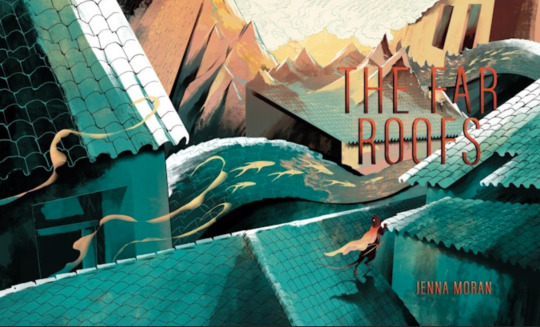

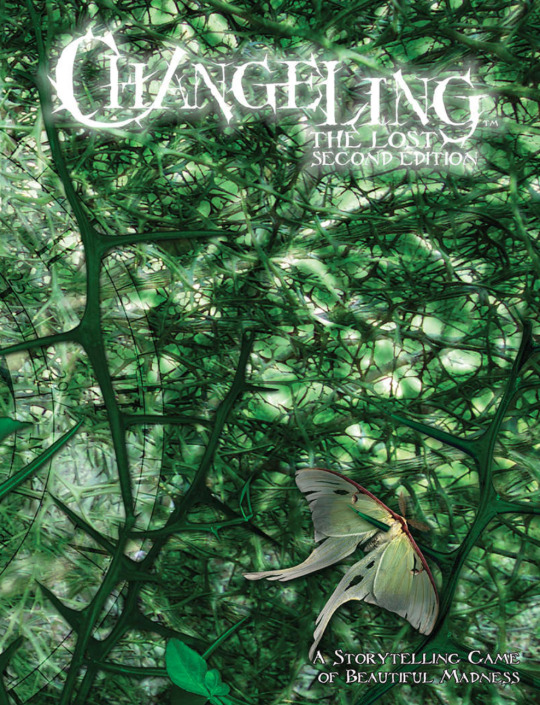

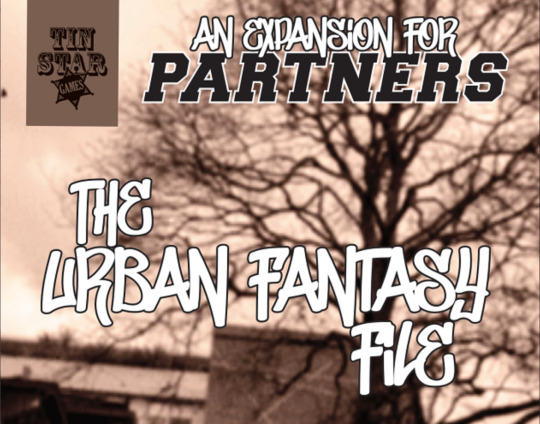

City of Mist, by Son of Oak Games.
City of Mist is a role-playing game of film-noir investigation and super-powered action. It is set in a modern metropolis rife with crime, conspiracies, and mysteries. The protagonists are Rifts, ordinary people who became the living embodiment of a legend, their Mythos. While your Rifts may seek to strike a balance between the mysterious nature of their Mythos and their mortal aspirations, the powers within them always threaten to tear their lives apart. They have unwittingly become a part of a secret world of clashing stories, and soon other legends will come looking for them with demands.
City of Mist is a combination of PbtA and FATE, giving your characters descriptive tags to use for both their benefit and their detriment as they go about solving mysteries in a supernaturally-saturated city. The primary theme of the game is mystery, and thus more than anything your characters will be primed for investigation. That’s not to say that there isn’t violence - but violence and fighting can be de-emphasized if the group is more interested in the mystery side of things.
Character Creation involves a combination of mundane and supernatural themes, as your character is endeavouring to strike a balance with the parts of themselves that they recognize (student, parent, office worker, ex-partner) and the parts of themselves that are hard to understand (mythical beast, deity, folktale, urban legend). What’s important to define is your daily routine, your personality, and what kind of supernatural powers you have.
This game isn’t explicitly anti-violent, but it absolutely provides you with ways to solve problems that aren’t violent, so I think City of Mist is worth checking out.
Scary Monsters & Nice Sprites, by Pammu.
Scary Monsters and Nice Sprites is a narrative RPG about spending your night in one of the only clubs in your city that’s safe for creatures of the night like yourself. All you want to do is have some fun just like the humans do. Play a supernatural creature of choice, put some sick EDM on the speakers and get your game on!
This game works best for an even number of players, up to 6, and is GM-less. It combines urban monsters with flirting, dark clubs and hookups. Each of your characters will look for a partner by doing things that will appeal to the other players. If they like what you do, they’ll reward you with tokens, which you can spend to improve the atmosphere of the club. Fill another player’s intimacy meter, you’ve won them over, and the two of you decide how the night ends for both of your characters.
If you want a game about flirting and the magic of a nightclub, this is your game.
The Far Roofs, by Jenna Katerin Moran.
The Far Roofs is an original role playing system and bundled campaign using pens or pencils, paper, six-sided dice, ten-sided dice, playing cards, and a bag of letter tiles. It's complete in one volume: with this one book and the equipment above, you'll have everything you need to play.
As the story progresses, your characters will gain access to over 150 unique, narrative-focused powers developed and refined over the course of a decade for the Chuubo's Marvelous Wish-Granting Engine RPG before being simplified and adapted for use herein.
The Far Roofs is still being Kickstarted, but Moran’s work on Chuubo’s Wish-Granting Engine produced a game that emphasizes wonder and emotional experience. The Far Roofs looks to deliver along the same lines, and the examples of play point towards investigation, social interaction, and magic powers. Jenna Moran is also known for her unique and evocative storytelling in her work, so I think it’s definitely worth checking out.
Lighthearted, by Kurt & Kate Potts.
Welcome to the magical 80s dream world of Lighthearted. You are a Prep, Jock, Geek, Rebel, or Outcast, like those kids in The Breakfast Club, except you are just about to start magic community college. Through play, we'll explore how you grow out of your high school cliques all while dealing with magical mishaps, college parties, vampires, and worse—finals!
Lighthearted is a complete tabletop roleplaying game that uses the language of film and television to reimagine the coming of age stories popular in 80s teen movies like Weird Science and Sixteen Candles, but with a modern fantasy spin. It's set in an alternate 1980s with fantasy elements weaved into the most outlandish bits of 80’s pop culture. There are fantasy religions mixed in with mall culture, dark magic cold wars, and magical glamours instead of plastic surgery.
This is a game of magic and coming-of-age, as you play first-year students at a magical community college. You’re off to the big city, and the big world - will you survive your first college party? Your first vampire?
The whole game feels like the neon lights of a vibrant night-life combined with the nostalgia of an 80’s film. Your magic is attached to how you feel, so as your emotions change, so will your effectiveness at certain actions. If you want a game that’s as light as its name, and you are seeking out rosy-tinted nostalgia, this might be your game.
Changeling: the Lost, by Onyx Path.
Once upon a time, they took you from your home. They promised you a place at their side, and meaning in your life, and they surrounded you with beautiful things. But the beautiful things were oh so sharp, and they laughed when you bled.
Day by day, they changed you. But day by day, your will grew stronger. On the last day, you smashed your way through the beautiful things and ran, not noticing as you bled or feeling as you cried.
You fought with courage and cleverness and took yourself home. Now the beauty and the horror are yours, to have and to hold and to live.
Welcome to once upon right fucking now.
So I’m familiar only with the 1st edition of Changeling, but as far as I understand, the setting and core premise of the game is the same in the 2nd edition. Changeling: the Lost is a game of fairy trauma. Your characters are survivors of a fae horrorscape, a place both wondrous and terrifying all at once. This game is solidly in the horror genre, but it contains within it a taste of the magical, and it’s also the reason I got into roleplaying in the first place.
As in many Chronicles of Darkness games, fighting is an option in here, but it’s not a wise option. Getting into fights pulls at your characters’ ability to understand the difference between our world and the world of Fae, it’s very easy to sustain supernatural damage that is hard to heal, and, well, sometimes it’s hard to tell who your real enemies are in the first place.
I’d say that Changeling is more of a political game than anything else. Your characters will have to dance through the highly literal wording of faerie pledges, and untangle difficult relationships between Courts that are both safe havens and potential beds of sedition. This is a violent game, but much of the violence possible in Changeling isn’t physical - it's emotional.
This Night On The Rooftops, by C.M. Ruebsaat.
This is a game about gazing out over the smokestacks after dark, with the wind in your hair and a friend at your side and a thousand lights of progress on the streets below.
This Night on the Rooftops is a collaborative storytelling game for 2-5 players about friendship, growing up, and revolution. You will play members of a gang of children in The City, a fantastic world of industry and dying magic, where witches labour alongside factory-workers to make ends meet.
This game looks slightly less modern, but it takes the fantasy aspect of witchcraft and places it inside an industrial city. The game uses a modified version of the No Dice No Masters rule set, which is excellent for stories that have an ebb and flow to them, managed through the use of token expenditure. This game is also GM-less, giving everyone at the table the same amount of control over what happens next.
Since the characters are a gang of teenage witches looking to make ends meet, this game doesn’t strike me as one that prioritizes fighting or violence. The city looks big enough to grind up the characters if they’re not careful, so they’ll likely have to find solutions to problems that don’t get them (or their dependants) in trouble. If the game is like other No Dice No Masters games that I’m familiar with, the group will also have a big say over which elements of the city are the most intriguing to them.
Partners: The Urban Fantasy File, by Tin Star Games.
Some murders are just elf defence…
Vampires are real, magic is real, elves are real - and murder is still very very real. This expansion takes you and your Partner down the moonlit streets of urban fantasy, where the dead sometimes get back up again but crime is still a mystery needing two heads to solve.
The base game for this, Partners, is a two-player mystery-solving game about a pair of detectives, a straight-shooter and a wildcard. You’ll need the base rules to play, but this supplement brings in dead elves, suspicious vampires, and other common characters in any urban fantasy genre. It can work as a one-shot, or as a series of episodes. If you want a game that's primarily about solving a mystery more than anything else, this is is for you.
Solacebound, by Sascha Moore.
Young monsters played at the boundary between the worlds. They slipped and stranded in a human city. Isolated and unwelcome, they search for each others help and a way back.
Solacebound is a GM-less Game for 3-5 people to play over a few hours. Search a sprawling, oppressive city for your friends, find out who is willing to give you a roof, bash back against authorities, cook together and console each other. Will you find a way back home before all passages close?
You are teenage monsters trying to find their way through an urban environment, in a place that is hostile to them. You survive by hiding out, finding each-other, and do things together to make sure you keep each-other healthy. Cards from a deck act as resources, but also as an oracle to help you describe the fallout of any given action, and the emotions that are attached to it. This is a game about metaphors, about what it is like to live in a place that fears you, so I definitely recommend making sure the entire table knows what this is about before starting a game.
You Might Also Want to Check Out
Subway Runners, by Gem Room Games.
122 notes
·
View notes
Text
Starlett - Final part
Cooper Howard/fem!OC (not self-insert)
Tags: Hurt/comfort (sort of?), non-allowed romantic connection, lots of tention, pre and post war drama, romance, some fluff
Warnings: Mentions of domestic abuse (no graphic scenes or descriptions of that nature), angst, canon wasteland violence
This branches out from canon but I thought it was a cute story idea so I had to write it. Enjoy! ♡
Part 1 | Part 2 | Part 3
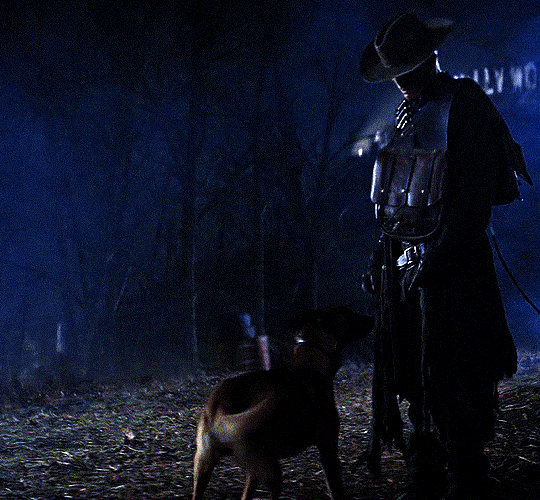
2077
That night, after dinner, Irene found Cooper on the sofa with Janey asleep on his lap, watching an old noire film with the volume down low.
"Thank you very much for dinner Mr. H- Cooper." She corrected herself, speaking low so as not to wake Janey. "It was lovely."
He looked up as she walked over. "It was no trouble at all. Janey loved having you here."
She smiled at his daughters sleeping face as she sat down on the edge of the sofa. "You've got a good kid there."
He looked down at her proudly. "Yeah, I sure do."
"She reminds me of my baby sister, she lives with my folks in Sacramento. I don't get to see her much anymore with my work and everything with Frank and Lee. It'll be good to see her again."
"How long has it been?"
"Almost 2 years. I know my sister resents me for how much I'm away, but hopefully that'll change now that I'll be away from Frank, at least until the divorce proceedings." She sighed with uneasiness.
"You'll be fine." Said Cooper encouragingly. "You're stronger than you think."
"Ditto." She smiled warmly. "And don't worry about Janey, you both love her so much. She'll understand when she's older, I promise."
He smiled, touched by her words. "Thank you."
She looked into his eyes and saw something she never had, a good man, a man who loves unconditionally and stands up for his family.
She, just for a moment, imagined what it would be like if he was her husband instead of Frank, if Janey were their daughter, if this was her life and not the daily abuse she had been going home to every night.
She could feel emotions begin to well behind her eyes and she snapped out of it before she embarrassed herself.
"Well, I should get some sleep, I'll be leaving early tomorrow. Thank you again."
The warmness that emanated from her was a welcome comfort in the midst of everything that had happened in the last few months. He almost didn't want her to leave, but he couldn't let himself fall, not now, not for her. They were meant for another time, another world, not this one.
"Irene?" Said Cooper, stopping her before she left. "This whole thing with Vault Tec...something's happening, something I'm not sure we'll ever come back from.
You're free from it now. Whatever's coming...it won't be worth giving up your happiness."
What he said about Vault Tec concerned her, not that it was surprising, but he was right about her happiness, he was right about everything. She wasn't going to be held back any longer.
"Thank you." She said, smiling softly.

2296
The sky was still dark when he left the cave. He'd covered Irene with whatever he could find to try to conceal her from raiders, hoping nothing else would find her while he was gone.
He knew there was a clinic in this area somewhere but whether it had anything left in it was a gamble.
As he made his way hastily through the area, he couldn't stop thinking about her and it just made him angry, 219 years of trying to become the monster that he had to be in order to survive, only for her to show up and remind him of that warmth that he'd long since forgotten. It made him weak, but he couldn't let her die, not now.
He heard movement up ahead, two men laughing drunkenly as they stumbled to find somewhere to relieve themselves.
Raiders.
The cages and skewered bodies around the building were a dead give-away and their little base just happened to be the clinic he was looking for.
Jackpot. They definitely had a stash in there somewhere.
The two men separated to find somewhere to piss but just as one got comfortable, Cooper blast his head off and took the other one out just a split second later.
"Oh HELL no!" Came a voice from the doorway of the clinic.
Without hesitation, Cooper shot him too, a bloody mess left on the door frame behind where he had been standing.
He stormed inside, his pump-action shotgun in hand, willing to use up all of his ammo to get what he needed.
Bullets and wood chips were flying every which way, and he took a bullet or two, but it took him no time at all to obliterate every person in that building.
He searched hastily for supplies, and when he found a first aid box full of stimpaks and cotton thread, he grabbed it and left, picking up several blood packs on his way out.

2077
The next morning, Irene was up early, her bag already in her car when Cooper came out to meet her.
"You weren't kiddin' about leavin' early." He said, the clock in the hallway reading 7:12am.
"I thought it'd be best if I left earlier rather than later."
He knew why. He didn't argue.
"Give this to Janey for me, would you? I noticed she liked it and I know it'll be in good hands."
She handed Cooper a silver locket with a daisy engraved delicately on the front.
He looked at it a bit surprised. "Are you sure?"
"Yeah, I don't much care for it anymore. It'll be more appreciated with her." She smiled.
She did one last check of her purse to make sure she had everything and the tention in the air was starting to thicken. When she knew she had everything, she looked back up at him.
"Cooper?" She asked. "Do me a favour and don't let the world harden that heart of yours, ok? That part of people is important, even if it makes us feel weak, always remember that, ok?"
She leant forward and kissed his cheek. "See you 'round cowboy."
She smiled at him one last time before getting in her car, and as he watched her drive away he felt his heart ache a little. He would miss her, her warm smiles, and how she made Janey laugh, but it wasn't meant to be, and he knew that.

2296
He pulled off the foliage covering her now pale body and opened the case.
Her breathing was shallow and laboured, a puddle of blood underneath her that had started to coagulate.
He used one of the stimpaks, then another, then another until he had used all six, then pulled out the thread and started sewing up the deep gashes on her side that were sticky with blood.
He remembered the last time he saw her, her smile, the kiss. He remembered watching her drive away and wishing she hadn't. He remembered the last things she said to him.
"...don't let the world harden that heart of yours, ok? That part of people is important, even if it makes us feel weak..."
When he finished sewing, he hung up one of the blood bags and attached the long tube to her arm.
He was still and focused, hoping he wasn't too late, his hands now covered in her blood.
When she woke up after only a few minutes, she saw him sitting by the fire beside her and smiled sleepily.
"Hey there cowboy."

The End
#cooper howard#cooper howard x reader#cooper howard x fem reader#cooper howard x oc#cooper howard x fem oc#cooper howard fic#cooper howard fanfic#cooper howard fan fiction#the ghoul#the ghoul x reader#the ghoul x fem reader#the ghoul x oc#the ghoul x fem oc#the ghoul fic#the ghoul fanfic#the ghoul fan fiction#fallout#fallout tv#fallout tv show#fallout tv series#fallout amazon#fallout prime#fallout amazon prime#walton goggins
122 notes
·
View notes
Text
Red Dragons; Or, the problems of adaptation and the early serial killer procedural
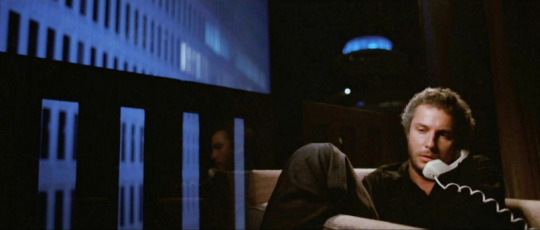
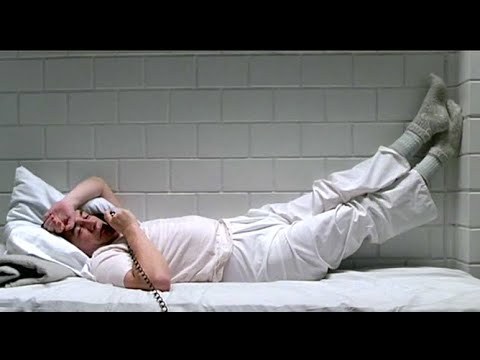
Red Dragon (1981) has the distinction of being the most frequently adapted Thomas Harris novel in the Hannibal Lecter "quartet." Despite the universal recognition of Jonathan Demme's Silence of the Lambs (1991), with iconic performances from Jodie Foster and Anthony Hopkins, and the more recent cult status of the series Hannibal (2013), which draws from all four books, it's Red Dragon, in some ways the most "obscure" Thomas Harris novel, that has lived three, arguably four, different lives onscreen over three decades.
Manhunter, visually, is an 80s noir feast set to atmospheric synths, but works within the newly established slasher genre as it attempts to make its own mark. The 1980s were truly the decade of the slasher flick, or the first wave thereof, and Red Dragon had to contend with expectations set up by the likes of Freddy Krueger and Michael Myers. Although this isn't a write-up about the history of slasher films, the basic premise I am going with is that the early slasher serial killer was portrayed as monstrous and, compared to our favorite killers today, one-dimensional antagonists. When I think about the origins of the slasher genre, I always think about the way the ineffectual psychologist in Halloween (1978) describes his former patient's "devil's eyes," behind which lived something "purely, simply evil." Dr. Loomis is dogged in his determination to impress upon the local authorities that Michael Myers is a force of nature who is unreachable by psychology, the study of the human mind. Furthermore, the slasher flick was unconcerned with the elements of the procedural: like in other horror subgenres, law enforcement are disposable foils that demonstrate the danger of the "monster" and the vulnerability of his targets and/or come in at the end to mark the conclusion of the spectacle (until the sequel, that is).In many ways this just seems like a quirk of history. I've been operating under the assumption that when Red Dragon came out in 1981, Thomas Harris introduced a type of story to a media landscape that had scant precedent for the serial killer mystery or procedural, distinct from the related nascent slasher horror subgenre, unlike today when a plethora of "murder shows" benefit from the success of this formula. Hannibal "the Cannibal" Lecter, the ur-murderer of the Thomas Harris fictional universe, became a cultural archetype that looms over modern crime television and film as he does over the investigations of beleaguered law enforcement officials in both Red Dragon (1981) and Silence of the Lambs (1988). When Michael Mann brought this first "Hannibal" novel to the screen in 1986, he too was breaking ground, to mixed reactions. Manhunter (1986), which lamentably lost its "Red Dragon" title due to studio publicity decisions, is both ahead of and a product of its time.
Manhunter, visually, is an 80s noir feast set to atmospheric synths, but works within the newly established slasher genre as it attempts to make its own mark. The 1980s were truly the decade of the slasher flick, or the first wave thereof, and Red Dragon had to contend with expectations set up by the likes of Freddy Krueger and Michael Myers. Although this isn't a write-up about the history of slasher films, the basic premise I am going with is that the early slasher serial killer was portrayed as monstrous and, compared to our favorite killers today, one-dimensional antagonists. When I think about the origins of the slasher genre, I always think about the way the ineffectual psychologist in Halloween (1978) describes his former patient's "devil's eyes," behind which lived something "purely, simply evil." Dr. Loomis is dogged in his determination to impress upon the local authorities that Michael Myers is a force of nature who is unreachable by psychology, the study of the human mind. Furthermore, the slasher flick was unconcerned with the elements of the procedural: like in other horror subgenres, law enforcement are disposable foils that demonstrate the danger of the "monster" and the vulnerability of his targets and/or come in at the end to mark the conclusion of the spectacle (until the sequel, that is).
Manhunter, and Red Dragon generally, is not a slasher flick. In fact, beyond the deliberately provocative reporter Freddy Lounds and a few men with barely any screen time who are killed off in brief fight scenes, the Great Red Dragon doesn't kill anyone at all. At the very least, no one is murdered in his signature serial killer style. The ritualistic murders occur before the film (and novel) begins, and the narrative revolves around understanding the mind of the serial killer and preventing him from killing again. At the same time, the conventions of the slasher film seem to limit the directions the film can go. Both Francis Dolarhyde and Hannibal Lecter (or "Lecktor") in the film have fairly opaque inner lives and limited screen time, while Thomas Harris notably does delve into the mindset and motivations of the "psychopath," positioning the killer as a subject of psychology, rather than an exception to it.
Furthermore, Manhunter's revised ending reframes one of two major female characters as a recognizable "final girl," and relegates the other to only existing in Will Graham's "happy ending," out of reach for the killer. This is the opposite outcome of the actual ending in the novel, and always seemed a bit tacked on to me, and not for artistic reasons. Will Graham can't actually end up broken and haunted because there has to be a clear demarcation between the serial killer "monster" and the "real" people who survive him. Blurring that distinction is, arguably, the "point" of Red Dragon. Michael Mann, perhaps, couldn't adapt the novel's conclusion "faithfully" because the conventions of this kind of psychological thriller weren't established, and did the best he could, introducing new building blocks for the "serial killer" archetype but not successfully pitching them to the wider public. Manhunter was not a financial or critical success upon its release, and refining the Thomas Harris "blueprint" was left to Jonathan Demme's Silence of the Lambs (1991), which made the strategic and hugely significant choice of allowing Hannibal Lecter to become a breakout character.
The next adaptation of the novel Red Dragon has seemed to me, frankly, like a bit of a cash grab. The 2002 Brett Ratner film, starring Edward Norton and Anthony Hopkins, capitalized off of the success of Silence of the Lambs and the release of a new Thomas Harris Hannibal Lecter novel. This film was for those who missed Manhunter in the 1980s, which many did, and those who considered a prominent Hannibal Lecter played by Anthony Hopkins essential to an adaptation, which many also did. The most recent adaptation of Red Dragon is the cult hit drama Hannibal (2013), which focuses on the main characters of the novel, Hannibal Lecter and FBI profiler special agent Will Graham, and can arguably be seen as two different adaptations of the novel. Both of these more recent adaptations are more coherent and recognizable as exemplars and/or subversions of the serial killer procedural, playing off of the tropes introduced to the genre by the source material itself, like a particularly grizzly and morbid ouroboros.
So, we have many points of data to consider if we wanted to determine what makes a good adaptation of the novel Red Dragon.
Ironically, for a story that laid important groundwork for a whole subgenre of film and TV, Red Dragon is hard to adapt and definitely hard to update. (So is Silence of the Lambs for that matter, but that is a whole other kettle of fish.) To my mind, the main two difficulties stem from both a strength and a "weakness" of the original novel.
A strength: Harris takes advantage of contemporary technology to create a clever mystery at the center of the novel. The problem: this particular bit of technology was only truly at home in its first 1986 adaptation, Manhunter. Both Red Dragon (2002) and Hannibal (2013) had to make compromises to adapt the central plot device. Red Dragon (2002) avoids the issue by simply setting the film in the 1980s, relying on the audience's knowledge of VHS technology of that time, which, since it was 2002, was more or less assured for an R-rated movie. Hannibal (2013) sidesteps the issue more or less entirely by making the "mystery-solving" pieces functionally irrelevant. (At one point, Hannibal Lecter makes a dismissive reference to the killer using "social media" the way the original story used VHS and the matter never comes up again.) To date, this central plot twist has never been successfully adapted for contemporary audiences in the 2010s - or 2020s for that matter. The 2010s show itself, in its choices, implicitly makes the argument that the technical "mystery" elements of novel weren't really all that important to its overall message. Depending on your point of view, this argument is successful. However, this argument also depends on the irony that the creators of the show can dispense with the set pieces of the serial killer procedural and take artistic license because the source material introduced those expectations into the genre to begin with. Tradeoffs all around.
Another challenge to adaptation is sometimes considered a "weakness" of the book: after the real "plot" of the novel vis a vis Will Graham's hunt for the "Tooth Fairy" begins, Harris makes the bold choice of adding the point of view of the serial killer du jour himself, diving into the eponymous Red Dragon's motivations and experience, which almost takes place in a parallel universe apart from that of Will Graham, Lecter, and the BSU/BAU until both narrative threads collide in the climax. The problem: this choice "derails" the suspense of the whodunit and adds character development for a relative stranger to the reader. Every adaptation of Red Dragon changes the structure of the plot so that the parallel storyline of Francis Dolarhyde, the Red Dragon, is pared down and interspersed with the main narrative (usually) earlier on. Every adaptation has decided that Thomas Harris's precise plot structure isn't actually essential. This judgment call is also ironic: Thomas Harris apparently "flubs" the standard conventions of the serial killer procedural that did not yet exist because he was in the middle of inventing them.
But, we may ask, isn't this the nature of adaptation? The answer: of course it is. Adjusting plot mechanics based on the period of the adaptation and restructuring the pacing for film/television are some of the most basic changes one can make when adapting a book for the screen. However, that does open up interesting questions of theme and intent. What is essential to the Red Dragon story? What is it, in the end, all about?
Leaving aside all caveats about the subjective nature of interpretation or the possibility of a work being "definitively" about anything, I believe there are two broad interpretations of the novel and all existing adaptations favor one or the other.
Red Dragon is a novel about how much monster there is in a, well, man and vice versa: the fate of the soul is at stake. This is a clear theme of Will Graham and Hannibal Lecter relationships in every iteration: to catch a particularly "monstrous" killer requires understanding said killer, but if you understand them too well, what does that say about you? And, more importantly, where does that leave you? (In the original Will Graham's case, nowhere good, with a broken marriage and an existential crisis, or, when we catch up with him in the sequel, in the Florida Keys, now a miserable drunk. For the modern Will Graham of the 2010s series, TBD.) Empathy itself instills horror, which is a fairly complex idea to explore in the late 1970s when Thomas Harris was writing the novel. (In fact, I will always find it remarkable that Thomas Harris had the foresight to research the methods of criminal profilers at the FBI at the beginning of the discipline and the BSU itself, getting in on "the ground floor" for better or worse for horror fiction and actual forensic psychology.) It's also very cross-media, as identification with violence on screen (and the "male gaze" itself) were emerging as key features and problems of film available to critique. The focus on "video" and boundaries between self and other in the novel seem very prescient.
Alternatively: Red Dragon is a novel about the limits of personal transformation. Thomas Harris seems preoccupied with the idea of ritual murder as an alchemical process motivated by the desire to become something "transcendent." (While one can see the mystical whimsy in a man thinking he's becoming a dragon, a figment of William Blake's imagination, "Buffalo Bill's" or Jame Gumb's desire to transform "into a woman" in a somehow "not-trans" way in Silence of the Lambs falls egregiously short and reflects more on a failure of imagination on the part of Thomas Harris and his readership than anything else.) I find the metaphysical aims of these serial killers interesting for two reasons. First, sexual sadism is de-emphasized as a motive, which is not typical of the serial killer archetype of the time: the most prominent serial killers in fiction (such as in early slasher films) kill because of some perverse urge, as an extension of the "evil" men they are or were made to be. Their murders aren't about anything. Both Francis Dolarhyde and Jame Gumb , in contrast, think they are setting out to accomplish something and that the brutality of their actions is beside the point. This is what constitutes their insanity, as this is clearly not true.
The actual nature of their murders and the ugly psychoanalytical implications of their compulsions are the ultimate limitation on their aspirations to "becoming." No matter what they think is going on their heads, they direct their violence toward women, and it is women who ultimately put an end to their reigns of terror. (Molly Graham and Reba McClane in Red Dragon and Clarice Starling, among others, in Silence of the Lambs.) The female characters serve as a "reality check" for the dreamy, bloody men of the books, which is earnestly ham-fisted on the part of Thomas Harris but also significant for the genre. Arguably none of the women in the first two Hannibal novels play the role of "final girl," that is, an "innocent" woman who acts as audience surrogate and restores socially acceptable norms at the end of the film. (The focus on such a "good girl's" experience means you can take a comfortable distance from the murderer and put yourself in the position of "victim." You are also anticipating that she will be spared in some way, which restores a sort of moral balance to the universe: the other victims in some way "had it coming.") In Red Dragon, the active female characters are not sorted into the "virgin/whore" dichotomy: in fact, even the actual sex worker character (Freddy's girlfriend) remains unscathed, and her feelings are more relevant to the other characters than her occupation, humanizing Freddy postmortem. The victims and potential victims, almost all of them mothers, clearly did nothing "wrong" and their sexual objectification is placed squarely on the shoulders of the men watching them. The women left standing at the end of the novels don't just "escape" the killers: they're the ones who put the killers down despite the male characters' inadequacies, and they, unlike a Jason or a Michael Myers, stay down.
Of course, I think both broad themes are very present and active in Red Dragon, and, probably unsurprisingly, Hannibal Lecter is something of a cipher for both threads. If our main concern is coming to terms with our empathy and capacity for violence (or "men's," I suppose), Hannibal Lecter nimbly eludes being a subject of empathy, instead setting himself up as the observer and interpreter of other killers. His insight into other people is certifiably superior: he's literally a renowned psychiatrist. The possibility of a Hannibal Lecter raises the stakes enormously for our own navel-gazing, as we are not just wondering, along with Will Graham, whether the wicked deeds of others might appeal to us, but are actually facing up to the reality that the killer has been beside us as a peer all along, not the subject of scrutiny. If our main concern is the limitations of personal transformation, Hannibal Lecter is a very sharp foil for our doomed killers because while he can easily identify the signs of a transmutation complex, it isn't especially relevant to him personally. Hannibal Lecter doesn't kill and eat people because he's turning into anything. As he famously tells Clarice Starling as she attempts to interview him, "Nothing happened to me. I happened." He already is what he is, rooted in sensual reality - like the women in the books - and he is merely indulging his appetites and aesthetics. This, I think, is why he prevails and why he can make himself at home on the side of our woebegone detective protagonists when he feels like it. Hannibal Lecter is never doomed: he can always happen to you.
Manhunter favors the first tendency, and is not particularly interested in Francis Dolarhyde's "Becoming" as the Great Red Dragon. This allows for a very intense and nuanced meditation on identification and the role of empathy that artistic representations of violence invoke. The focus on "seeing" gains a whole other dimension in the context of film, as there are many interesting things going on with perspective and scene composition. 2002's Red Dragon favors the second tendency, if I had to make the judgment call. Although the film is probably the most "faithful" adaptation of the events of the novel, I do think you can come away from the film not remembering that Will Graham has any particular problem/gift of heightened empathy or that losing himself by identifying with Hannibal Lecter or Francis Dolarhyde was ever a serious possibility. (Even at the climax, when Graham to a "violent" place he ends up taking on the persona of Dolarhyde's abuser, not Dolarhyde himself, which is entirely an invention of the film.) What the film does emphasize is the quixotic journey of Francis Dolarhyde, giving quite a lot of room to his backstory as well as his inner conflict between his deadly, "spiritual" inclinations and his romance with Reba. Also, and most importantly, this is the one adaptation of Red Dragon that actually allows Molly Graham to kill Francis Dolarhyde when he tries to make the Graham family another ritual sacrifice. There's an intentional symmetry in the novel between the murders and Dolarhyde's ultimate demise at the hand of the desirable "mother," which really underlines the juxtaposition between the story Dolarhyde is telling himself and what he's actually been doing.
Perhaps this is me tying a bow on it all by claiming that Bryan Fuller's Hannibal (2013) manages to incorporate both major themes, but I do think it's very interesting to at least think of the series as two different adaptations of Red Dragon. The first adaptation is obvious: the second half of season 3 "does" Red Dragon, and honestly gives fantastic depth to Francis Dolarhyde's inner world and his quest for transformation through death. However, I also think you can view the entire series as a whole as an adaptation of Red Dragon. I say this because the main bulk of the existing seasons of Hannibal cover the period of Will Graham and Hannibal Lecter's relationship prior to Lecter's capture, which is only depicted (in exposition) in the novel. Aside from the incorporation of various plot points and characters from the novels Hannibal (1999) and Hannibal Rising (2006) in season 2 and season 3, one could place the (first) three seasons of Hannibal entirely in the world of Red Dragon. I think this is especially suggested in the first episode, which opens with Will Graham doing a visionary walk-through of a family annihilation that pretty much exactly hearkens back to his first major scene in the novels and the films: later in the episode, Graham's inner monologue about imagination and taste - the first substantive insight we get into the character - is rewritten as dialogue between Graham, Jack Crawford, and Hannibal Lecter. So, even while the plot of the series begins at a different point in time, stylistically, we're back at the beginning of Red Dragon anyway. This interpretation allows for a lot more flexibility if we're looking for major themes coming from the source material. Identification and empathic intimacy are the animating features of the central Will-Hannibal dyad: at the same time, the psychic landscapes Will Graham (and to a lesser extent characters like Alana Bloom or Bedelia du Maurier) explore alongside Hannibal Lecter are tied up in questions of transformation and limitation.
In the series, Lecter not only pinpoints the urges to "become" in other killers but also becomes deeply invested in Will Graham's capacity for metamorphosis as an expression of identification and intimacy. If, as I've suggested previously, Hannibal Lecter exists as a grounded corrective to the soulful longings of murderers who wish to change through the deaths of others, this seems like a contradiction on its face. However, if we take this interpretation of Hannibal Lecter in the novels into our viewing of the series, the tension between Hannibal and Will sharpens into a very intimate exchange of knowing and refusing to know one another. Hannibal Lecter seems to have no interest in Will Graham becoming something or someone else via the alembic of murder. When he tempts Will, he is not (ultimately) encouraging the profiler to look away from the world to some impossible dream that would mark him for death like the other murderers they hunt together. Hannibal Lecter is very interested in Will Graham becoming a killer, that is, embracing all of who he already is with clarity and insight, which is a transformation rooted in psychology and is also entirely possible. Will then resists self-knowledge, or bringing his self-knowledge into the material world. Hannibal resists his own identification with another human being, and realizes (a bit too late) that there may be a way to bring Will down to Earth (and closer to him) without destroying him, as he inevitably does - gleefully - to his other proteges and projects.
No adaptations of Red Dragon have embraced the novel's ending. In the end of the original novel, Will Graham is left in the hospital, resigned to the fact that he's lost his wife and stepson, and drifts into a drug-induced dream state, where he doesn't dream of "Molly leaving" or Dolarhyde, but rather visits a memory from the time shortly after he'd killed Garret Jacob Hobbs. He remembers visiting Shiloh, the site of a particularly bloody battle in the American Civil War, and has an epiphany. At the time, he'd considered the battlefield "haunted," but now realizes that it is, in fact, "indifferent." In the natural world, there is no mercy, "we make mercy": "There is no murder. We make murder, and it matters only to us." Graham accepts that he has the capacity to "make murder; perhaps mercy too." Murder, however, is what he understands. He wonders if "vicious urges" in humanity and the "dark instinctive knowledge" of those urges could act as a vaccine against the "virus" of violence, allowing for the possibility of civilization that has "overgrown the basic reptile brain." He doesn't settle on an answer, but does believe he was wrong about Shiloh. "Shiloh isn't haunted - men are haunted. Shiloh doesn't care."
Granted, this would be hard portray on screen. A filmmaker would have to resort to voice over, perhaps, or merely suggest where Thomas Harris declares. Another option would have Will's epiphany take the form a letter to Hannibal Lecter, an answer to a message Graham never receives. In this letter, which Jack Crawford destroyed, Lecter says we live in a "primitive time," "neither savage nor wise. Half measures are the curse of it. Any rational society would either kill me or give me my books." He wishes Graham a "speedy convalescence," and hopes "he will not be too ugly" after recovering from the wounds the Great Red Dragon gave him. "I think of you often," he writes, and then writes his name. Lecter believes "half measures" are the true poison: Graham, if he knew his dream was a reply to his counterpart, would perhaps take the position that "half measures" are the antidote, a strategic ambivalence that, perhaps, makes mercy as possible as murder. Such a reply, however, would lack conviction. It would, however, betray that in the end this is a conversation vulnerable to distance and time and that there is no appeal to a higher power or state of enlightenment, just to one another. Perhaps the last scene of "The Wrath of the Lamb," the final episode of season 3 of Hannibal, is the closest we'll come to seeing a cinematic portrayal of this conclusion. The profiler taking the serial killer into his arms, where they hold each other like lovers, and then throwing both of them off a cliff and into the sea. Not a half measure at all.
In the meantime, all of these versions of Red Dragon are worth a look.
#nbc hannibal#hannibal lecter#will graham#manhunter 1986#red dragon#thomas harris#silence of the lambs#slashers#francis dolarhyde#murder husbands#essay#fadserver#hannibal meta
60 notes
·
View notes
Photo
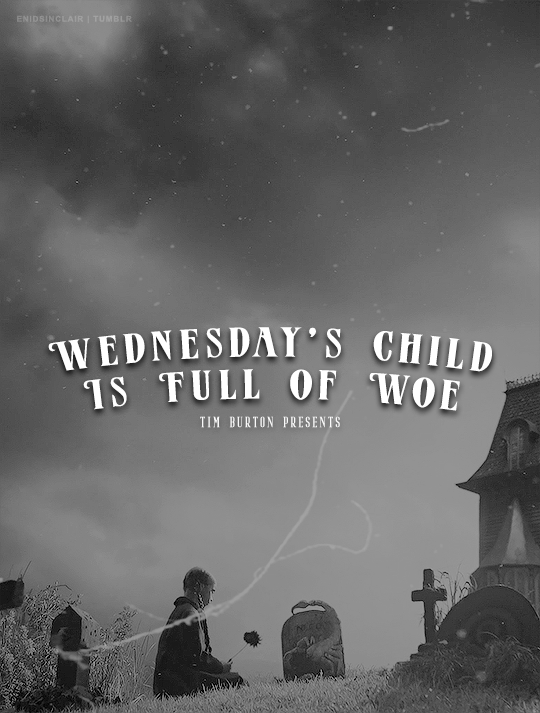







The sheriff thinks monsters only exist behind the walls of this school. The truth is, there are monsters everywhere.
Wednesday as Films Noirs
#*#filmsnoirs#wednesdayedit#wednesdaynet#wednesdaynetflix#filmtvedit#televisiongifs#dailynetflix#nessa007#userdiana#tvedit#tvgifs#dailytvfilmgifs#useroptional#chewieblog#userbbelcher#black and white#wednesday#gif
566 notes
·
View notes
Text
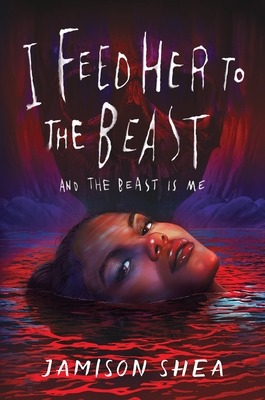
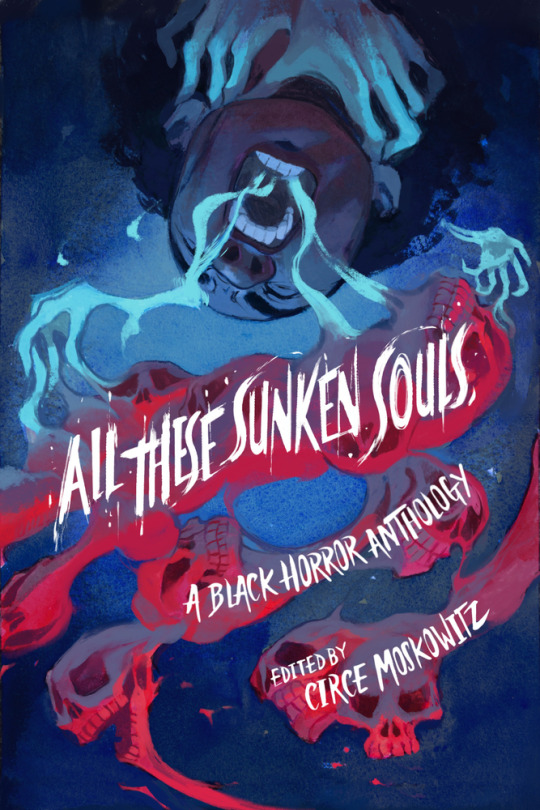

3 YA Black Horror Books for Spooky Season
Now that spooky season is in full swing all around me, it's time to turn to some spinechilling reads. It's been an amazing year for Black horror in YA, from an anthology (out October 17th!) to exciting new books that will keep you up all night long. Here are 3 YA horror books with Black protagonists for you to check out!
I Feed Her to the Beast and the Beast Is Me by Jamison Shea
There will be blood. Ace of Spades meets House of Hollow in this villain origin story. Laure Mesny is a perfectionist with an axe to grind. Despite being constantly overlooked in the elite and cutthroat world of the Parisian ballet, she will do anything to prove that a Black girl can take center stage.
To level the playing field, Laure ventures deep into the depths of the Catacombs and strikes a deal with a pulsating river of blood. The primordial power Laure gains promises influence and adoration, everything she’s dreamed of and worked toward. With retribution on her mind, she surpasses her bitter and privileged peers, leaving broken bodies behind her on her climb to stardom.
But even as undeniable as she is, Laure is not the only monster around. And her vicious desires make her a perfect target for slaughter. As she descends into madness and the mystifying underworld beneath her, she is faced with the ultimate choice: continue to break herself for scraps of validation or succumb to the darkness that wants her exactly as she is—monstrous heart and all. That is, if the god-killer doesn’t catch her first.
From debut author Jamison Shea comes I Feed Her to the Beast and the Beast Is Me, a slow-burn horror that lifts a veil on the institutions that profit on exclusion and the toll of giving everything to a world that will never love you back.
You're Not Supposed to Die Tonight by Kalynn Bayron
At Camp Mirror Lake, terror is the name of the game . . . but can you survive the night? This heart-pounding slasher by New York Times bestselling author Kalynn Bayron is perfect for fans of Fear Street.
Charity Curtis has the summer job of her dreams, playing the “final girl” at Camp Mirror Lake. Guests pay to be scared in this full-contact terror game, as Charity and her summer crew recreate scenes from a classic slasher film, Curse of Camp Mirror Lake. The more realistic the fear, the better for business.
But the last weekend of the season, Charity's co-workers begin disappearing. And when one ends up dead, Charity's role as the final girl suddenly becomes all too real. If Charity and her girlfriend Bezi hope to survive the night, they'll need figure out what this killer is after. Is there is more to the story of Mirror Lake and its dangerous past than Charity ever suspected?
All These Sunken Souls: A Black Horror Anthology by Circe Moskowitz (Anthology editor) -- Out on October 17th!
Welcome to the Dark. We are all familiar with tropes of the horror genre: slasher and victims, demon and the possessed. Bloody screams, haunted visions, and the peddler of wares we aren’t sure we can trust. In this young adult horror anthology, fans of Jordan Peele, Lovecraft Country, and Horror Noire will get a little bit of everything they love—and a lot of what they fear—through a twisted blend of horror lenses, from the thoughtful to the terrifying.
From haunted, hungry Victorian mansions, temporal monster–infested asylums, and ravaging zombie apocalypses, to southern gothic hoodoo practitioners and cursed patriarchs in search of Black Excellence, All These Sunken Souls features the chilling creations of acclaimed bestsellers and hot new talents, with stories from Kalynn Bayron, Donyae Coles, Ryan Douglass, Sami Ellis, Brent Lambert, Ashia Monet, Circe Moskowitz, Joel Rochester, Liselle Sambury, and Joelle Wellington.
#i feed her to the beast and the beast is me#you're not supposed to die tonight#all these sunken souls#black horror#ya lit
59 notes
·
View notes
Text
Something pisses me off that people in the fandom reduce all the criticism of the episode with Marinette's trauma to the fact that people in the fandom are stupid or love Chloe too much and hate Marinette
No, people don't like this episode because it has no respect for the viewer and it has many problems that are revealed later in the same season, on top of that, I question whether Adrien's trauma was addressed at all in a respectful way, or whether they justified everything by that he is a senti monster? Exactly
By the way, defenders of this episode, I hope you were going after Felix like you were going after Chloe? Oh no, wait, he was a victim of domestic violence and he was rich, so like Chloe, but he was a boy, so his trauma is more important
But coming back, this episode with Marinette's trauma is problematic on many levels, mainly because it fucks with the logic even more than in the first season when in the episode "Origins" when they rescued Chloe, and then in "Lady Wi-Fi", the chat noir suspects that Chloe it's a ladybug and don't ask about logic, because there is none

Not only does Kim and Chloe make so much sense that Chat Noir from the episode "Lady Wi-Fi" could give a high five on this topic, but calling it "Feature Sharpening" is an understatement, it's more like Thomas had too much to drink before writing the entire script for the episode, and like a typical kid, he created the episode like one of the "Scooby-Doo" movies, where Scrappy-Doo was an out-of-character character in order to be antagonized (Because the fandom didn't like him, so it's better to kill off the whole character this way)
What's the best way to end the story of a father who abuses his child? Give him a statue, the fandom will 100% love it
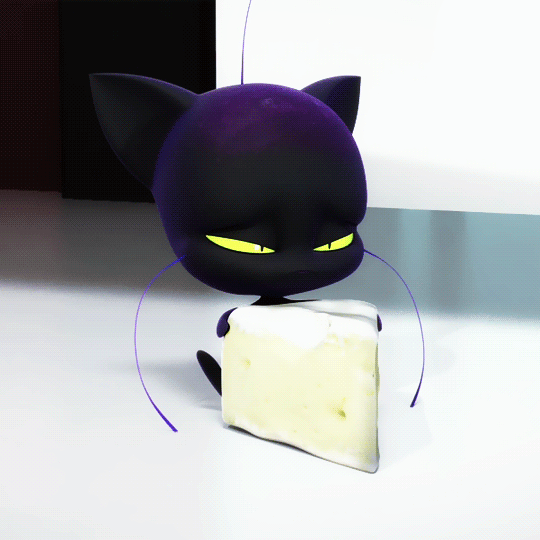
Seriously, Thomas, we all know you didn't write this episode for traumatized people, but just to go the way people did to kill Scrappy-Doo, which was to kill Chloe herself so that the fandom would hate her and Kim in the process suffered, because why not?
And by the way, to explain your imaginary daughter with your ex…
The standards of this series also contributed to the reception of this episode, and I would also like to remind you that Zag wanted redemption for Chloe, but Thomas himself did not want it, so when Zag left to create the film, Thomas went to destroy the whole Chloe, because like a child he cannot reconcile with this, that a fictional character can have any development and tried his hardest to kill Chloe like a Scappy-Doo movie, seriously Thomas, I understand a lot, but as a creator you should use it to your advantage and not kill her off because you hate your character so much (Like a child what creates illustrations of cartoon characters dying because he hates them)
Seriously, this show has 00's to 2010 vibes, but today? Such productions are more annoying than entertaining (And I say this as a 01-year-old)
This writing by Chloe and Kim seriously has Scrappy-Doo movie vibes to me
So the episode with Marinette's trauma is even more irritating, because anyone sensitive will notice what Thomas did here and it is a seriously conscious murder of his characters.
The context of this episode makes you feel offended rather than understood by the creator, because it's not about empathy towards people with trauma like Marinette, but about killing off the characters of Chloe and Kim
No matter how much I love the trope of the main character who, over time, turns out to have a trauma that the viewer doesn't know about, this show fucked it up and resulted in a not-so-good taste
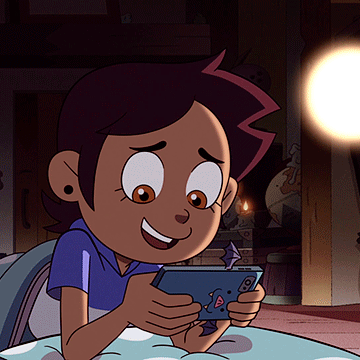
It's just the context of this episode that causes it, I'm seriously sensitive to this way of writing and it has irritated me since I was a child, I was hoping that the newer the cartoons, the more it would disappear, but then Thomas appeared and did my hated trope, but turned it up to the max
Sometimes I wonder why many great creators get as few seasons as possible, while Thomas gets more
Because no matter how much I liked this show, after Chloe's arc fell apart and the writing fell apart because killing Chloe is more important than everything else in this show, it made me fed up
And because of creators like Thomas, many people consider animations as worthless and only entertainment for small children, because Thomas' writing style is effortless (And even productions for preschoolers can handle it, yes, I'm talking about "Bluey"), just as little as possible, and the fact that the fandom swallows everything has a simple task in this topic
Thomas had a good idea, but Miracolous's greatest enemy was Thomas himself

Damn, it's hard for me to come back to the series, but "Ladybug PV" is awesome, so Thomas himself has gone backwards in the development of his work, literally.
Ok, Felix was still problematic (It was chat noir back then, for those who don't know the history of the miracolous creation process)
But if Thomas could develop the character… Oh no, wait, he can't, that's why Felix became Adrien
By the way, Mr. Pigeon and the mime from the first season appeared in this version, just an interesting fact
I also have the impression that the characters had a better design than in the current series
There was another 3D version, which also looked amazing, so the version we got is the worst and this thought kills me, because this series could have been something more, but Thomas himself killed it, i.e. the creator killed his creation before showing it in its entirety to the world (Congratulations, Thomas)
Yes, I had to let go of all my frustration with the show and the fandom, because it's fucked up that when you criticize the bad writing of Marinette's trauma, people come up with their theories on why you do it, not why you do it and why you don't like it
#cartoon#cartoonist#ml critical#ml fandom salt#ml ladybug#ml salt#ml writers salt#ml writing salt#miraculous ladybug#adrien agreste#marinette dupain cheng#chat noir#chloe bourgeois#thomas why?#thomas astruc#thomas astruc salt#miraculous ladybug salt#ml writing critical#anti thomas astruc
49 notes
·
View notes